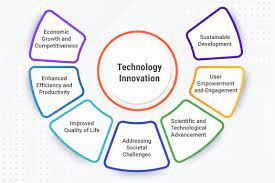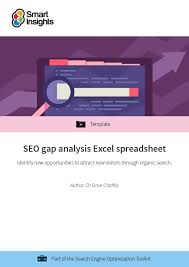The Different Types of Data Analysis Techniques
Data analysis is a crucial process that helps businesses make informed decisions, identify trends, and gain valuable insights from their data. There are various types of data analysis techniques that can be used depending on the goals and nature of the data. Let’s explore some of the most common types:
Descriptive Analysis
Descriptive analysis involves summarising and interpreting data to describe patterns, trends, and key features. This type of analysis is useful for understanding the current state of affairs and providing a snapshot view of the data.
Diagnostic Analysis
Diagnostic analysis focuses on identifying the causes of specific events or outcomes by examining historical data. It helps in understanding why certain trends or patterns occurred and provides insights into what factors influenced them.
Predictive Analysis
Predictive analysis uses statistical algorithms and machine learning techniques to forecast future trends or outcomes based on historical data. This type of analysis is valuable for making informed predictions and proactive decisions.
Prescriptive Analysis
Prescriptive analysis goes a step further than predictive analysis by recommending actions to achieve desired outcomes. It combines predictive modelling with optimization techniques to provide actionable insights for decision-making.
Diagnostic Analysis
Textual analysis involves extracting meaningful information from unstructured text data such as customer reviews, social media posts, or survey responses. Natural language processing (NLP) techniques are used to analyse text data and uncover valuable insights.
Spatial Analysis
Spatial analysis focuses on geographical data to understand spatial relationships, patterns, and trends. It is commonly used in fields such as urban planning, environmental science, and logistics to make location-based decisions.
Sentiment Analysis
Sentiment analysis involves analysing text data to determine the sentiment or opinion expressed by individuals towards a particular topic, product, or service. This type of analysis is valuable for understanding customer feedback and sentiment towards a brand.
In conclusion, different types of data analysis techniques offer unique perspectives and insights into complex datasets. By leveraging these techniques effectively, businesses can extract valuable information, make better decisions, and drive growth and innovation in today’s data-driven world.
Mastering Data Analysis: 7 Essential Tips for Effective Insights
- Understand the purpose of your data analysis
- Choose the appropriate type of data analysis (descriptive, diagnostic, predictive, prescriptive)
- Ensure your data is clean and well-organised before analysis
- Use visualisations to aid in understanding and interpreting the data
- Consider using statistical methods to draw meaningful conclusions
- Interpret the results in the context of your research question or problem
- Document your data analysis process for reproducibility and transparency
Understand the purpose of your data analysis
Understanding the purpose of your data analysis is crucial in determining the most appropriate type of analysis to perform. Whether you are aiming to gain insights, make predictions, diagnose issues, or prescribe solutions, clarifying your objectives upfront will guide you in selecting the right data analysis technique. By aligning your analysis with your goals, you can ensure that the outcomes are relevant, actionable, and valuable for driving informed decision-making and achieving desired results.
Choose the appropriate type of data analysis (descriptive, diagnostic, predictive, prescriptive)
When conducting data analysis, it is crucial to choose the appropriate type of analysis based on the specific goals and objectives of the study. Whether it is descriptive analysis to summarise data patterns, diagnostic analysis to identify causes of outcomes, predictive analysis to forecast future trends, or prescriptive analysis to recommend actions, selecting the right approach is key to deriving meaningful insights and making informed decisions. By understanding the distinctions between these types of data analysis and applying them judiciously, businesses can unlock the full potential of their data and drive strategic outcomes effectively.
Ensure your data is clean and well-organised before analysis
Ensuring that your data is clean and well-organised before analysis is paramount to obtaining accurate and reliable results. Clean data free of errors, duplicates, and inconsistencies reduces the risk of drawing incorrect conclusions or making flawed decisions based on flawed information. Well-organised data, with clear labelling and structured formats, streamlines the analysis process and enables efficient data manipulation. By investing time in preparing your data properly, you set a solid foundation for meaningful insights and successful data analysis outcomes.
Use visualisations to aid in understanding and interpreting the data
Utilising visualisations is a powerful strategy to enhance understanding and interpretation of data analysis results. Visual representations such as charts, graphs, and infographics can effectively communicate complex patterns and trends in a way that is easily digestible for stakeholders. By incorporating visualisations into data analysis processes, businesses can gain deeper insights, identify correlations, and make informed decisions based on a clear and intuitive presentation of information. Visualisations not only facilitate better comprehension of data but also enable more compelling storytelling and communication of key findings to drive actionable outcomes.
Consider using statistical methods to draw meaningful conclusions
When exploring different types of data analysis techniques, it is essential to consider incorporating statistical methods to draw meaningful conclusions. Statistical analysis helps in quantifying uncertainties, identifying patterns, and making reliable inferences from the data. By applying statistical methods, businesses can ensure the validity and accuracy of their findings, leading to more informed decision-making and strategic planning based on solid evidence and insights derived from the data.
Interpret the results in the context of your research question or problem
Interpreting the results of data analysis in the context of your research question or problem is crucial for deriving meaningful insights and actionable conclusions. By aligning the findings with the initial objectives or challenges that prompted the analysis, you can better understand how the data relates to your specific research question or problem. This approach ensures that the conclusions drawn are relevant, accurate, and directly address the core issues at hand, enabling informed decision-making and driving impactful outcomes in line with your research goals.
Document your data analysis process for reproducibility and transparency
Documenting your data analysis process is essential for ensuring reproducibility and transparency in your work. By carefully documenting each step of your analysis, including data cleaning, transformation, and modelling techniques used, you not only make it easier to replicate your results but also allow others to understand and verify your findings. This practice promotes trustworthiness in data analysis and helps in building a solid foundation for future research and decision-making based on the insights derived from the data.




